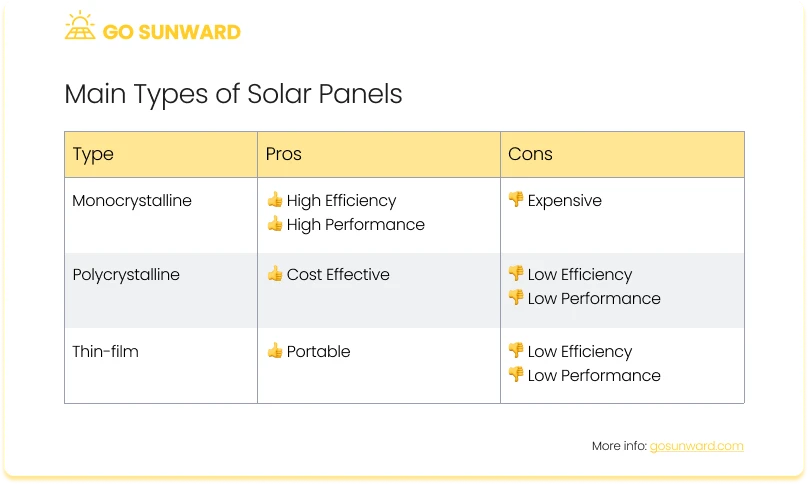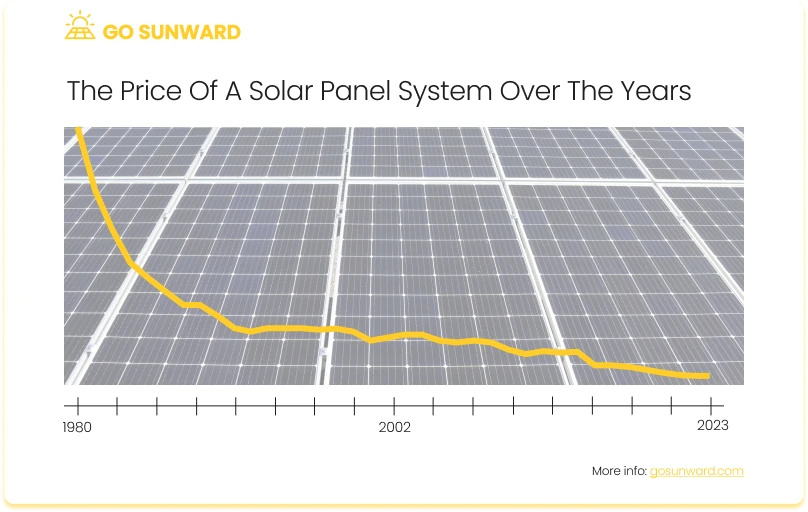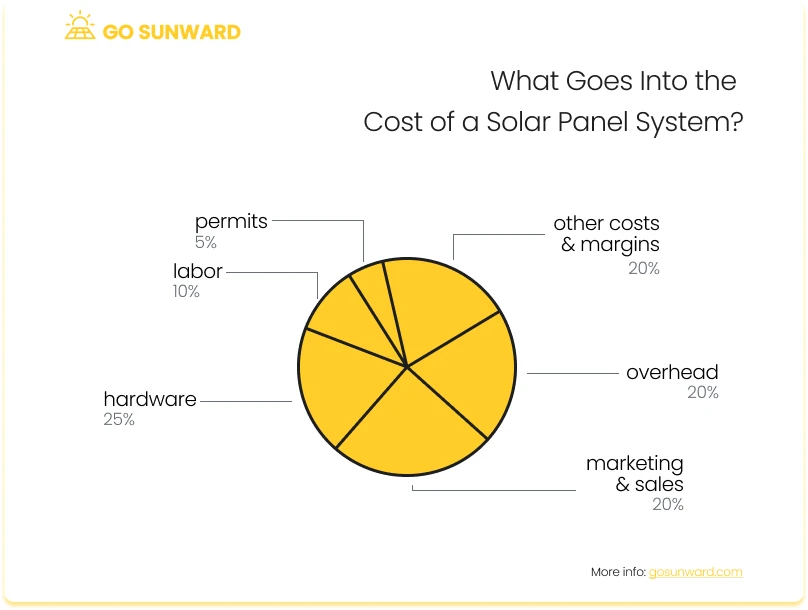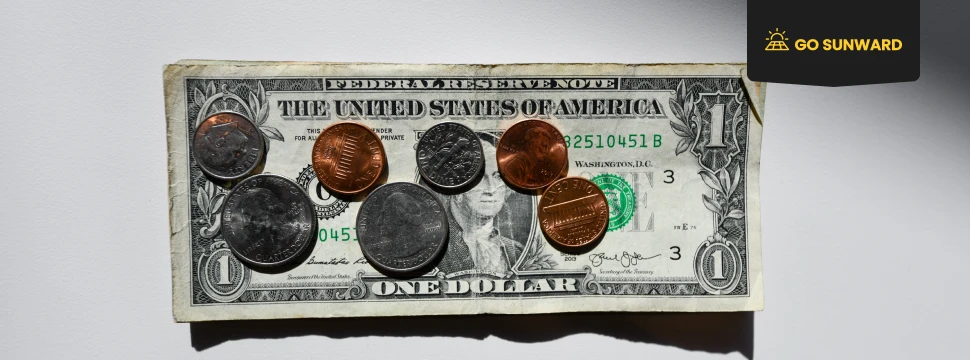Why Is Solar So Expensive?
The popularity of solar continues to rise, but a common question remains: why is solar so expensive?
Solar panels come with a significant price tag primarily due to the expenses associated with raw materials such as silicon and lithium, as well as the advanced manufacturing processes and potentially intricate installation requirements.
Nevertheless, the substantial initial investment in solar panels is counterbalanced by substantial long-term savings. In fact, numerous homeowners recoup their investment within a mere decade, thanks to the considerable energy cost reductions that solar panels provide.
Keep reading this article to uncover the factors contributing to the cost of solar panels and the key reasons underpinning their expense.
How Much Is A Solar Panel?
First things first, what is the cost of an average solar panel?
Based on current data, in the United States, a single solar panel typically ranges from $150 to $350. In terms of an entire residential solar panel system, it’s worth noting that a typical system may range from approximately $15,000 to $25,000, before any application of incentives, rebates and net metering schemes.
We have several articles that discuss solar panel prices, so click here to read more.
The Initial Investment
When considering the upfront costs associated with purchasing and installing solar panels, several factors come into play.
Firstly, there is the direct expense of acquiring the solar panels themselves. High-quality photovoltaic panels can be relatively expensive due to the advanced materials and technology used in their production. The cost of solar panels can vary significantly depending on factors like their efficiency, durability, and manufacturer reputation. Opting for top-tier panels may make the initial solar cost expensive but can result in greater long-term benefits.
In addition to the panels, there are other essential components required for a functional solar system. These include inverters, which convert the DC electricity generated by the panels into AC electricity usable in homes. Inverters can range in cost, with more advanced and efficient models often coming at a higher price point. Coupling your solar panel system with energy storage can increase your energy independence and reduce reliance on the grid, but will also increase the initial costs of your solar system.

Wiring and cabling are another consideration. High-quality electrical wiring is necessary to safely and efficiently transmit the generated electricity from the panels to the inverter and eventually to your home’s electrical system. The cost of these materials and the labor involved in their installation can contribute significantly to how expensive a solar installation is.
Mounting equipment is yet another essential component. This includes the racking or mounting system that securely holds the solar panels in place, ensuring they are properly positioned to capture sunlight. The cost of this infrastructure can vary depending on factors like the type of roof or surface the panels are installed on and the complexity of the mounting system required.
Moreover, the quality and efficiency of the chosen solar panels play a pivotal role in determining initial costs. High-efficiency panels are more effective at converting sunlight into electricity, meaning fewer panels are needed to meet your energy needs. While these panels are pricier, they can result in a more efficient and cost-effective overall system. Take a look at this article to find out more about the different panel options available to you and their associated benefits and costs.

Government Incentives and Subsidies
Government incentives, tax credits, and rebates play a crucial role in making solar installations more affordable for homeowners and businesses alike. These financial incentives are designed to encourage the adoption of clean and sustainable energy sources like solar power. Here’s a breakdown of their importance:
Offsetting Installation Costs: One of the primary benefits of government incentives is their ability to offset a significant portion of the upfront costs associated with solar installations. For instance, homeowners may receive tax credits or cash rebates for a portion of their solar panel system’s purchase and installation expenses. This makes it more financially feasible for individuals and businesses to invest in solar energy.
Promoting Sustainable Energy: Government policies that support solar incentives align with broader environmental and renewable energy goals. By promoting the adoption of solar energy, governments can reduce greenhouse gas emissions, decrease dependence on fossil fuels, and contribute to a more sustainable energy future.
Regional and National Policies: Governments worldwide have implemented various policies to promote solar energy adoption. Examples include the Federal Investment Tax Credit (ITC) in the United States, feed-in tariffs in Germany, and net metering programs in many countries. These policies vary by region and are often tailored to local energy needs and priorities.
Impact of Policy Changes: The affordability of solar energy is closely linked to government policies. Changes in regulations, incentives, or subsidies can have a significant impact on the economics of solar installations. For instance, the expiration or reduction of tax credits may temporarily increase the upfront costs of going solar. It’s important for individuals and businesses to stay informed about policy changes and adapt their plans accordingly.
Technological Advancements
Recent technological advancements in solar panel design and manufacturing have been pivotal in reducing costs and increasing efficiency, and this trend will likely continue, driving down costs and making solar more affordable.
- Improved Solar Cell Materials: Innovations in the development of more efficient and cost-effective materials, such as thin-film and perovskite solar cells, have led to increased energy production and reduced manufacturing costs.
- Enhanced Panel Efficiency: High-efficiency solar panels, including bifacial and multi-junction designs, capture more sunlight and convert it into electricity. This means that fewer panels are required to generate the same amount of energy, reducing installation costs.
- Smart Inverters and Monitoring Systems: Technological advancements in inverter technology and real-time monitoring systems optimize the performance of solar installations, increasing energy yield and overall system efficiency.
- Scaling and Automation: Solar panel manufacturing processes have become more automated and streamlined, leading to cost reductions through economies of scale.
The potential for future innovations is promising, with ongoing research into advanced materials, improved energy storage solutions, and enhanced panel designs. These innovations hold the potential to further reduce the cost of solar energy, making it even more affordable and accessible to a wider range of consumers.

Why Is Solar So Expensive? Don’t Forget Installation & Maintenance
When considering the installation of solar panels, it’s essential to understand the various components that contribute to the overall costs, including labor, permitting, and inspection fees. These can all contribute as to why solar is so expensive.

Installation
Labor expenses are a significant portion of the overall installation costs. Qualified and experienced installers are responsible for tasks such as mounting the solar panels, connecting the electrical wiring, installing inverters, and ensuring the entire system functions optimally. Labor costs can vary depending on factors like system size, complexity, and local labor rates.
Before the installation of solar panels, homeowners or businesses typically need to obtain permits from local authorities. Permitting fees encompass various costs, including application fees, plan review charges, and inspection fees. These fees are essential to ensure that the installation complies with local building codes, safety regulations, and zoning requirements.
Following the installation, the solar panel system often requires inspections by local authorities or relevant agencies to verify that it meets safety and performance standards. These inspections and potential certifications may incur additional fees.
Choosing reputable solar panel installers and independent contractors is key for a successful and cost-effective installation.
Maintenance
In addition to installation costs, it’s essential to consider ongoing maintenance expenses associated with solar panel systems. For more info on the maintenance required for solar panels, click here.
Routine inspections by qualified technicians are essential to ensure that the solar panels, inverters, and electrical components are operating correctly. These inspections may incur a modest cost but are crucial for system performance and longevity.
Solar panels can accumulate dust, dirt, and debris over time, reducing their efficiency. Regular cleaning is necessary to maintain optimal energy production. Depending on your location and environmental factors, this can be a DIY task or a service provided by professionals.
Inverters typically have a lifespan of 10 to 15 years and may need replacement during the system’s lifetime. The cost of a new inverter should be factored into long-term maintenance considerations.
Some solar panel system providers offer warranties and service contracts that cover maintenance and repairs for a specified period. These agreements can help mitigate unexpected maintenance costs.
The Benefits Outweigh The Costs
It’s important to acknowledge that while solar can be very expensive, it is undeniably a worthwhile investment. Not only does it lead to substantial financial savings over time, but it also delivers a positive and lasting environmental impact by reducing carbon emissions and promoting sustainability.
Durability and Lifespan:
Solar panels are known for their durability and longevity. Most high-quality solar panels are designed to withstand various environmental conditions, including rain, snow, hail, and extreme temperatures. Their typical lifespan ranges from 25 to 30 years or even longer. During this time, they continue to generate electricity, making them a long-term investment.
Long-Term Financial Benefits:
While the initial expenses of purchasing and installing solar panels may seem substantial, it’s crucial to consider the long-term financial benefits. Over the life of the system, solar panels can generate a significant amount of free electricity, reducing or eliminating your dependence on grid power. This translates into lower electricity bills or even net-zero energy costs. Additionally, many governments and utilities offer incentives, tax credits, and net metering programs that can further enhance the financial advantages of solar energy. As energy prices continue to rise, the savings from solar panels become more valuable over time.
Long-Term Environmental Benefits:
Solar energy offers substantial and lasting environmental benefits. By harnessing the power of the sun, solar panels produce electricity without emitting greenhouse gases or other pollutants. This results in a significant reduction in carbon emissions, helping combat climate change and reduce air pollution. Over their lifespan, solar panels can offset the emission of thousands of tons of CO2. Holistic Value: Solar energy offers a holistic value that extends beyond its upfront costs. It provides energy independence, reducing reliance on fossil fuels and volatile energy markets. This stability can insulate you from future energy price hikes and supply disruptions. Additionally, installing solar panels can enhance property values, making homes and businesses more attractive to potential buyers and investors. It also demonstrates a commitment to sustainability and environmental responsibility, which can have positive social and reputational impacts.
Conclusion
While solar energy may be expensive initially, it represents a truly worthwhile investment. By harnessing the sun’s energy, solar panels offer substantial financial savings and contribute to a cleaner, more sustainable environment.
So, when you think about the cost of solar panels, consider factors like government incentives, technological advances, and long-term benefits. These factors make solar energy a financially wise and environmentally responsible choice, helping create a cleaner and more sustainable future.




